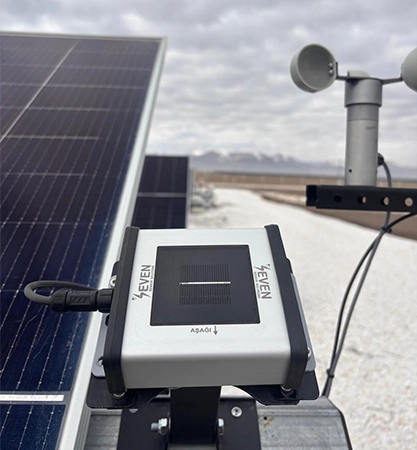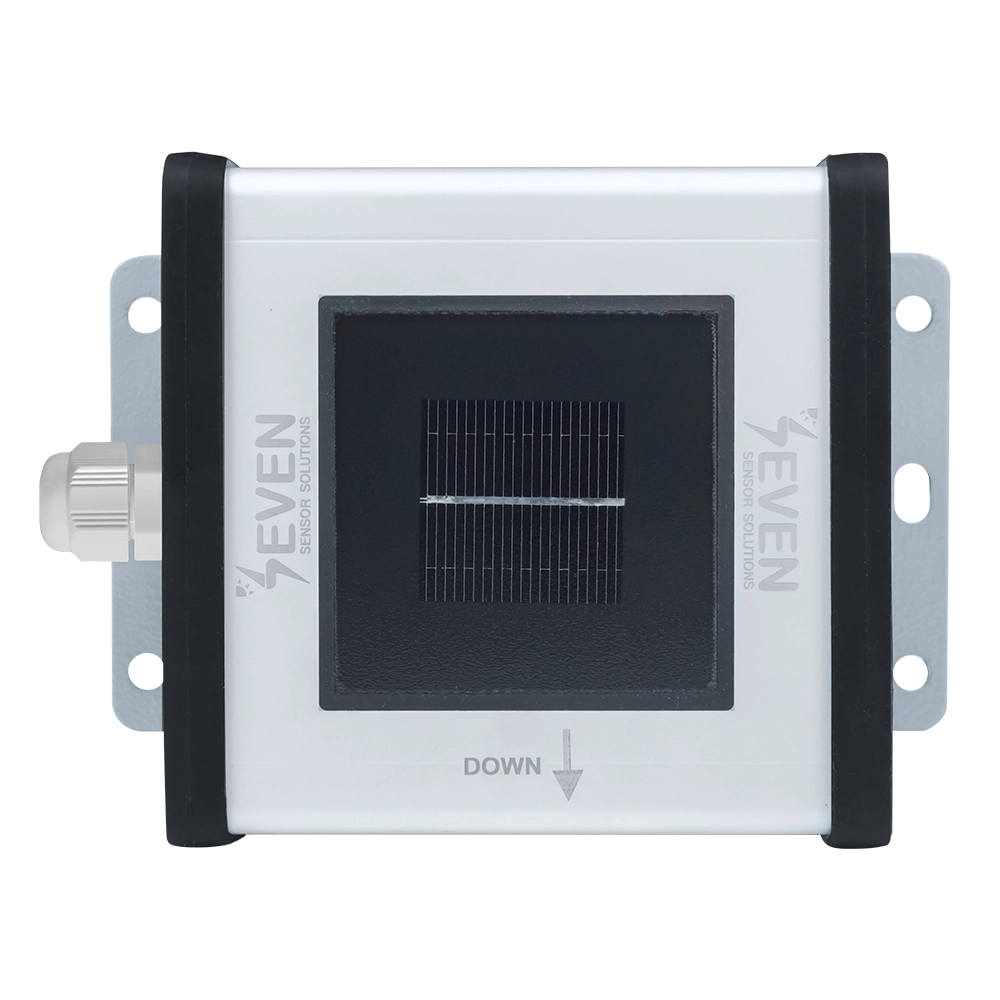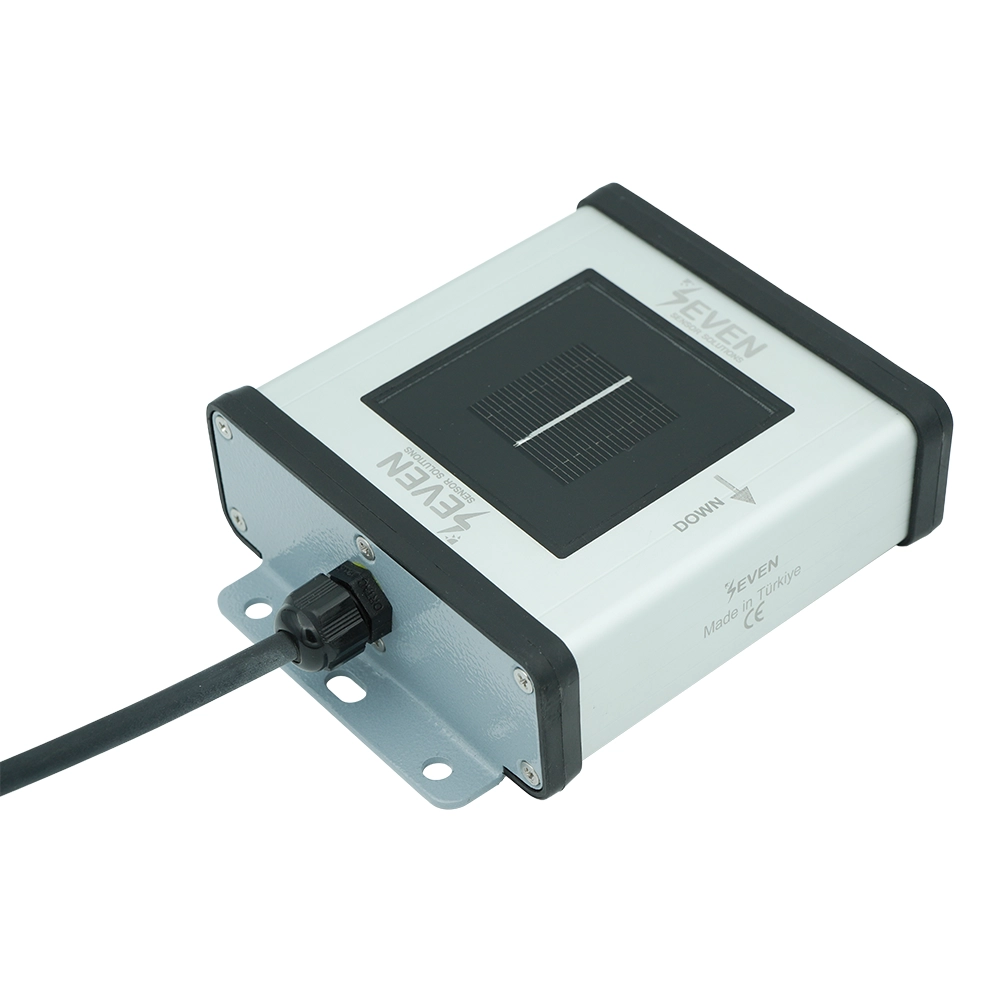Irradiance Sensor With 4-20mA Output – 3S-IS-T-I
The 3S-IS-T-I is a high-precision irradiance sensor designed for professional solar PV monitoring and performance testing. It measures how much solar energy reaches your panels, helping you track system efficiency, identify energy losses, and optimize performance.
Since we process the analog input from the PV cell through a microprocessor, we are able to provide a temperature compensated irradiance value.
Built with a monocrystalline silicon reference cell and a PT1000 temperature sensor, it provides stable, real-world readings that reflect actual PV module behavior.
Each unit is factory-calibrated, fully assembled, and shipped with a mounting bracket and weather-resistant cable for easy installation.
TECHNICAL SPECIFICATIONS OF IRRADIANCE SENSOR WITH 4-20MA OUTPUT
| Item Code | 3S-IS-T-I |
| Reference Cell | Monocrystalline Silicon (31 mm x 31 mm) |
| Current Shunt | High precision shunt resistor directly soldered to the terminals of the cell |
| Irradiance Range | 0 – 1500 W/m² |
| Uncertainty | ≤2%, as per IEC61724-1 standard Class A |
| Resolution | 0.1 W/m² ≤ 1W/m²; as per IEC61724-1 standard Class A |
| Response Time | 1 sec. less than 3 sec; as per IEC61724-1 standard Class A |
| Drift | Very small drift of <0.3%/ year |
| Field of View | Larger than 160° as per IEC61724-1 standard Class A |
| Tilt-Azimuthal Angle | 0°- 0° , ≤ 1°; as per IEC61724-1 standard Class A |
| Output Rate | 1/s |
| Data Output | Analog 4-20 mA |
| Power Supply | 12 to 30 V DC |
| Power Consumption | 50 mA max @24 VDC |
| Electrical Connection | 3 m LIYYC11Y PUR Cable, UV and Weather Resistant |
| Cell Temperature Sensor Type | PT1000 Class A as per EN 60751 |
| Operating Temperature Range | -40°C to +85°C |
| Operating Humidity Range | 0 to 100 % |
| Box Dimensions | 140 mm x 110 mm x 42 mm (W x L x H) |
| Weight | 0.3 kg |
| IP Rating | IP54 (IP65, IP68 options) |
| Sensor Housing Material | Aluminum |
| Compliant Standard | IEC 61724-1:2021 and IEC 60904 |
| Calibration | Each sensor is calibrated under Class AAA Sun Simulator as per IEC 60904-2 and IEC 60904-4 by using a reference cell calibrated by ISFH-Germany |
| Test | The test is carried under natural sunlight by using a calibrated reference cell from Fraunhofer ISE, Germany |
What Does an Irradiance Sensor Do?
An irradiance sensor tells you exactly how much sunlight is reaching your solar panels. This measurement — expressed in W/m² — is essential for comparing expected vs. actual system performance, calculating efficiency, and detecting potential issues like dirt, shading, or misalignment.
By combining a monocrystalline reference cell with temperature compensation, the 3S-IS-T-I delivers accurate, real-world data that you can rely on in all weather conditions.
How Does the 3S-IS-T-I Sensor Work?

The 3S-IS-T-I uses a monocrystalline silicon solar cell — similar to the ones used in PV panels — to measure sunlight. Then sunlight hits the cell, it generates a small current that increases in direct proportion to the solar irradiance.
This current passes through a precision shunt resistor, which allows the sensor to operate very close to short-circuit conditions and ensures stable, linear readings.
A temperature sensor attached to the back of the solar cell corrects small temperature-related variations. Both signals are processed by a microcontroller, which calculates the actual irradiance and temperature values and sends them out through a 4–20 mA output.
The electronics are designed for low power use and long-term reliability, making the 3S-IS-T-I a practical choice for continuous outdoor monitoring.
Why Choose the SEVEN Irradiance Sensor with Analog Output?
- Trusted accuracy: IEC 61724-1 Class A compliance with uncertainty ≤2%, calibrated as per IEC 60904-2 standards.
- Fast results: Response time of one second for real-time decision making. It can be reduced to 500 milliseconds upon request.
- Built to last: A UV-protected IP54 aluminum housing with optional IP65/IP68 ensures reliable operation in demanding outdoor environments.
- Quick setup: Plug-and-run design means fewer installation errors and faster commissioning. Supplied with mounting bracket and cable. Easy integration with any Analog-compatible PLC, SCADA, or datalogger.
- Cost-Effective: With its reliable performance and long lifespan, this sensor provides excellent value for money, reducing the need for frequent replacements and minimizing maintenance costs.
Frequently Asked Questions (FAQ)
1- What is the uncertainty of the irradiance sensor?
The uncertainty is ≤2%, fully compliant with IEC 61724-1 Class A requirements.
2- Does the sensor provide temperature compensated irradiance value?
Yes it provides temperature compensated irradiance value due to internal microprocessor.
3- Can this sensor connect directly to my SCADA system?
Yes, as long as your system supports Analog 4–20 mA, the sensor will be fully compatible.
4- How are the sensors tested and calibrated?
Each irradiance sensor is calibrated under a Class AAA Sun Simulator as per IEC 60904-2 and IEC 60904-4, using a reference cell calibrated by ISFH-Germany.
The sensors are tested in natural sunlight against a reference cell calibrated by the Fraunhofer ISE Institute.
5- How often should I recalibrate the sensor?
Recalibration every 2 years is recommended by IEC standards for maximum accuracy.
6- Where can I recalibrate the irradiance sensor?
SEVEN Sensor provides calibration services at its facilities. Calibration is performed using a Class AAA Sun Simulator, in accordance with IEC 60904-2 and IEC 60904-4 standards, and referenced against a calibration cell certified by the ISFH Institute in Germany.
Additionally we offer user-friendly interface where users can recalibrate the sensors in their home country and enter the new calibration values into the system.
7- Is the irradiance sensor Class A?
Yes. 3S-IS-T-I is Class A as per IEC standards.
8- What is the price of analog irradiance sensor?
The price varies between 165 EUR – 305 EUR.
9- Does the sensor include a cable?
Each unit comes with a 3 m LIYYC11Y PUR cable (UV and weather resistant). Other lengths are available on request. It is not recommended to be extended more than 20 meters.
10- What are the delivery times?
- Small orders: approx. 1-2 weeks
- Bulk orders (100 pcs): approx. 6-8 weeks
11- How do I set up the sensor?
Follow our user manual which include step-by-step instructions for configuring the sensors. We also provide remote setup support if needed.
12- What is the warranty?
All 3S-IS-T-I sensors come with a 5-year warranty.


